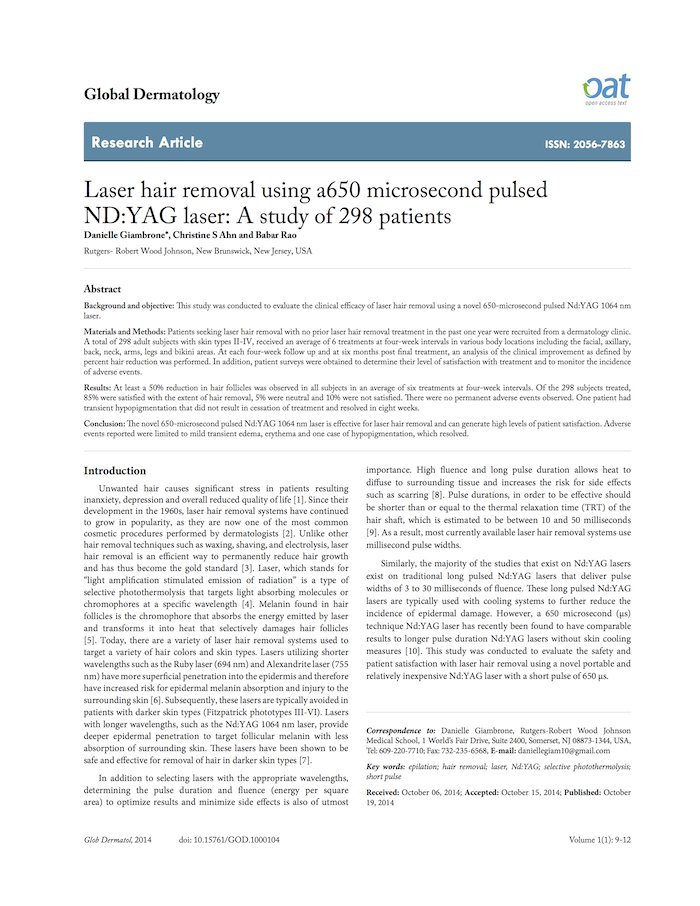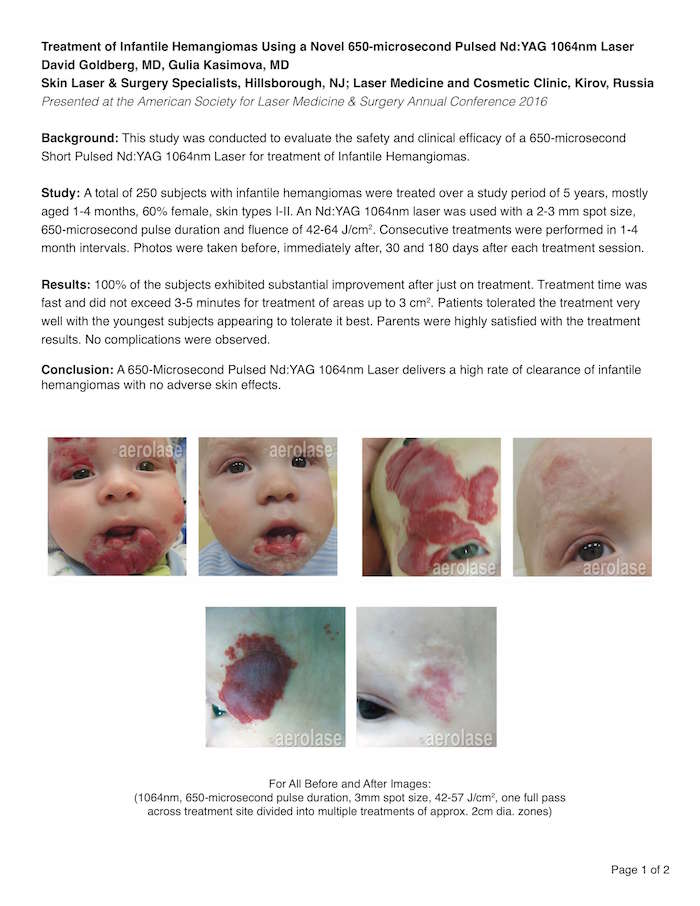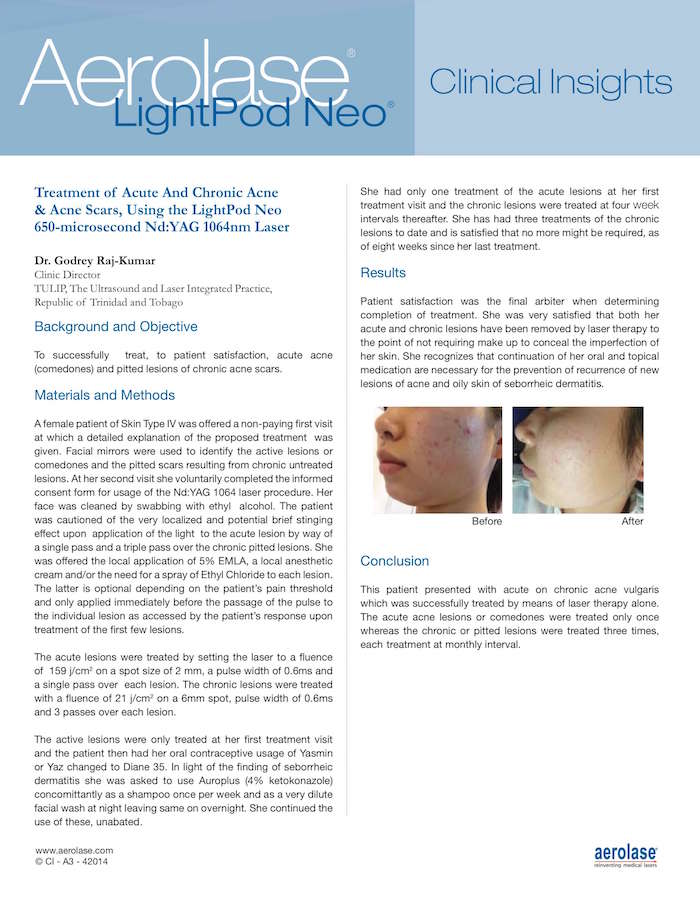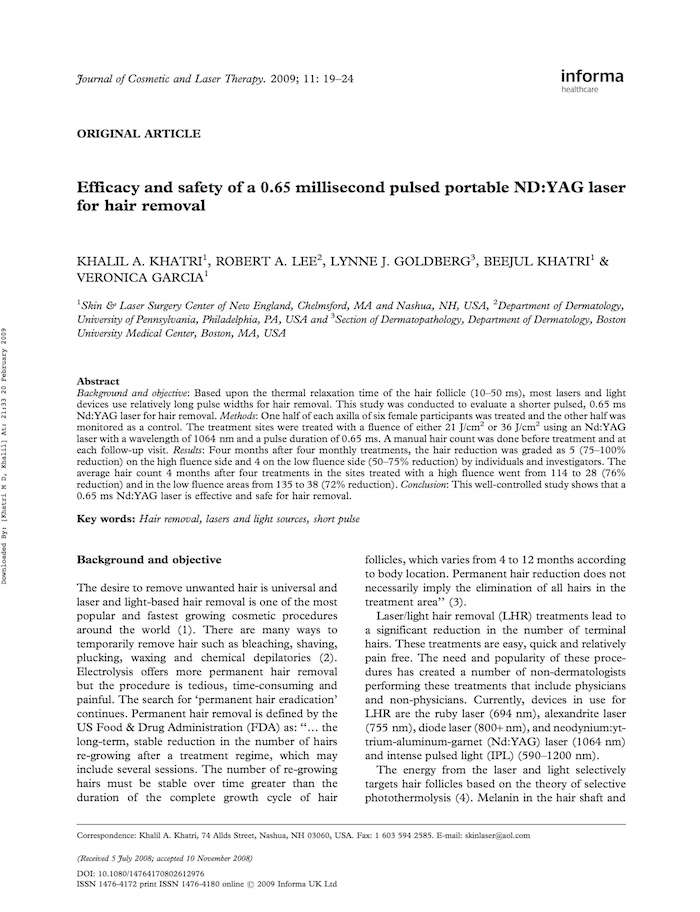Babar K. Rao, MD, Dermatology, New York, NY
Published in Global Dermatology Volume 1(1): 9-12
Unwanted hair causes significant stress in patients resulting in anxiety, depression and overall reduced quality of life [1]. Since their development in the 1960s, laser hair removal systems have continued to grow in popularity, as they are now one of the most common cosmetic procedures performed by dermatologists [2]. Unlike other hair removal techniques such as waxing, shaving, and electrolysis, laser hair removal is an efficient way to permanently reduce hair growth and has thus become the gold standard [3]. Laser, which stands for “light amplification stimulated emission of radiation” is a type of selective photothermolysis that targets light absorbing molecules or chromophores at a specific wavelength [4]. Melanin found in hair follicles is the chromophore that absorbs the energy emitted by laser and transforms it into heat that selectively damages hair follicles [5]. Today, there are a variety of laser hair removal systems used to target a variety of hair colors and skin types. Lasers utilizing shorter wavelengths such as the Ruby laser (694 nm) and Alexandrite laser (755 nm) have more superficial penetration into the epidermis and therefore have increased risk for epidermal melanin absorption and injury to the surrounding skin [6]. Subsequently, these lasers are typically avoided in patients with darker skin types (Fitzpatrick phototypes III-VI). Lasers with longer wavelengths, such as the Nd:YAG 1064 nm laser, provide deeper epidermal penetration to target follicular melanin with less absorption of surrounding skin. These lasers have been shown to be safe and effective for removal of hair in darker skin types [7].
In addition to selecting lasers with the appropriate wavelengths, determining the pulse duration and fluence (energy per square area) to optimize results and minimize side effects is also of utmost importance. High fluence and long pulse duration allows heat to diffuse to surrounding tissue and increases the risk for side effects such as scarring [8]. Pulse durations, in order to be effective should be shorter than or equal to the thermal relaxation time (TRT) of the hair shaft , which is estimated to be between 10 and 50 milliseconds [9]. As a result, most currently available laser hair removal systems use millisecond pulse widths.
Similarly, the majority of the studies that exist on Nd:YAG lasers exist on traditional long pulsed Nd:YAG lasers that deliver pulse widths of 3 to 30 milliseconds of fluence. These long pulsed Nd:YAG lasers are typically used with cooling systems to further reduce the incidence of epidermal damage. However, a 650 microsecond (μs) technique Nd:YAG laser has recently been found to have comparable results to longer pulse duration Nd:YAG lasers without skin cooling measures [10]. is study was conducted to evaluate the safety and patient satisfaction with laser hair removal using a novel portable and relatively inexpensive Nd:YAG laser with a short pulse of 650 μs.




